Mexican art made pottery
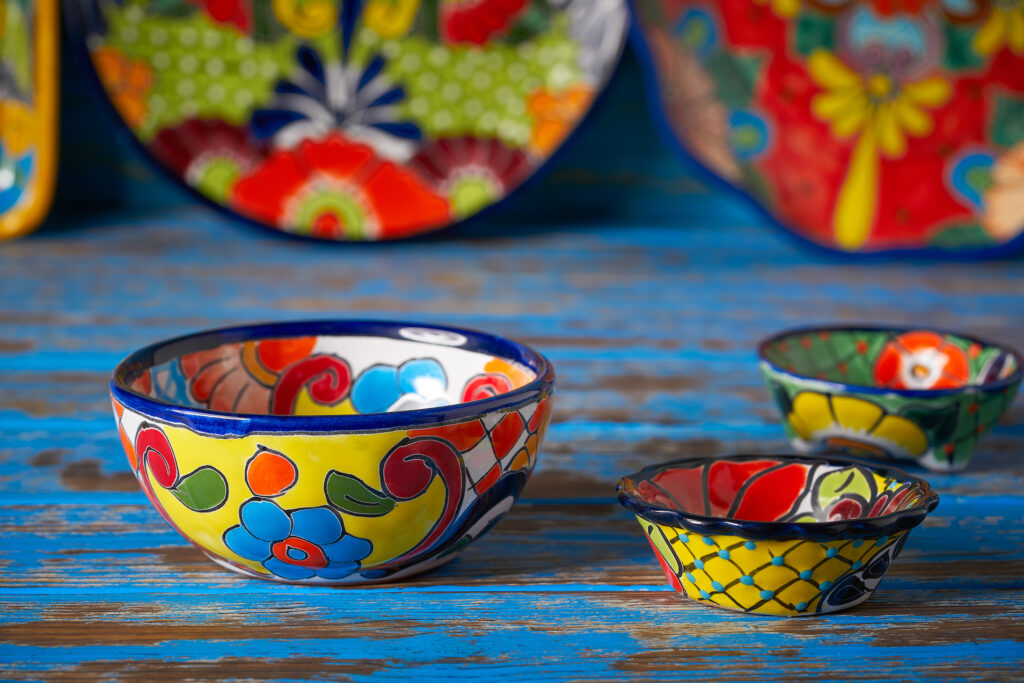
From the moment humanity discovered the properties of the dirt mixed with water, they began to form with that clay an imaginary inspired by the divinities and their natural environment. The artisan work in ceramics in Mexico began between the years 2300-1500 BC, by replacing the ancient objects carved in stone with pieces molded in clay, until it evolved into the precious works that we know today.
When ancient inhabitants of Mexico left behind the nomadic life, and adopted a sedentary lifestyle, they became potters.
—México Desconocido
Talavera | Puebla
The origin of the talavera is shared by Mexico and Spain. Historic records tell us about first Spaniards (original from Castilla-La Mancha Spanish region) being settled in the city of Puebla around year 1550. There, the teaching of this technique started to be spread mainly due to the skills of Puebla’s pottery makers. In fact, the registration with UNESCO as Cultural Heritage of Humanity belongs to both countries.
The manufacture of these pieces comprises five stages: forming or modeling, first firing, glazing, design and painting —in cobalt blue for the finest pieces and multicolored for the rest of the pieces— and second firing at 1,050 ° C. High temperatures transform the colors of mineral paints by reacting with the enamels applied, giving a glazed finish.
The motifs that are represented in the talavera pieces are elaborate, geometric designs and patterns, some inspired by Moorish art, which give a refined and very beautiful appearance.
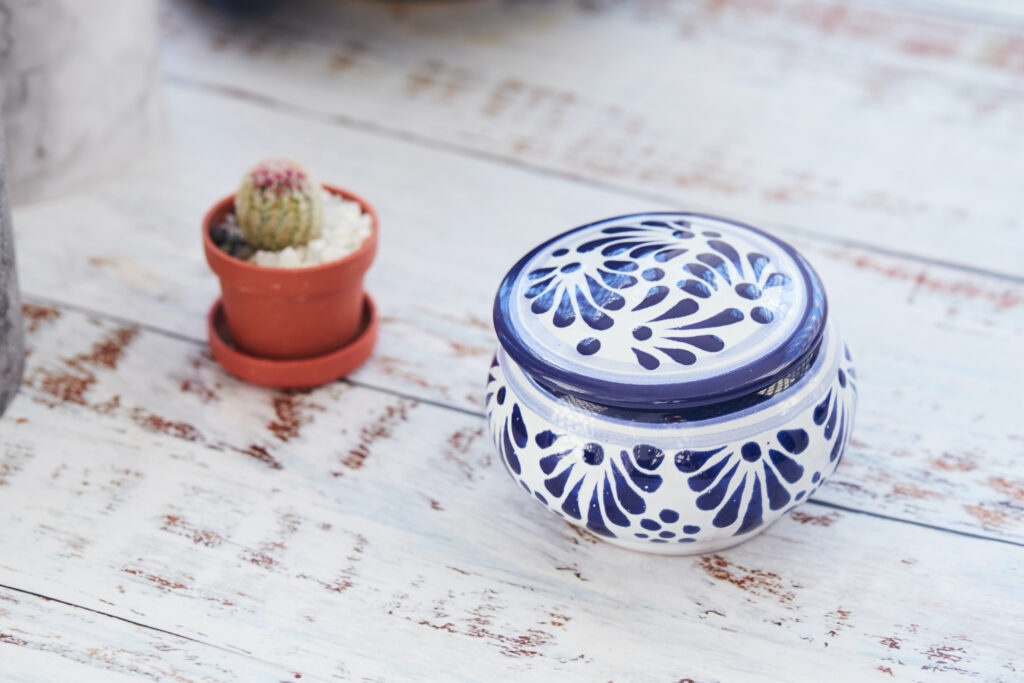
Majolica | Guanajuato
During colonial times, Guanajuato was an important mining center, and the economic boom resulted in the flourishing of ceramic workshops that produced fine pottery for the aristocracy, and common pieces for the rest of the population.
Everyday items such as plates, pots, bowls, pharmacy bottles, jugs and flowerpots, were made with decorations alluding to animals, plants and delicate lines that form stripes, frets and scrolls. Designs are based on Spanish pieces, but with the witty spirit of the Mexican potters, a fresher, spontaneous look began to be imprinted in the pieces.
The process of making majolica in Guanajuato is very similar to that in Puebla: a paste is made with clays from the area, it is shaped by hand with the help of a potter’s wheel. The piece is left to dry for five to seven days and then fired, what they call jahuete. Subsequently, the enameling or glazing is carried out by the immersion method and enters a second burning, to later touch up and decorate it, and put into the fire for the third time.
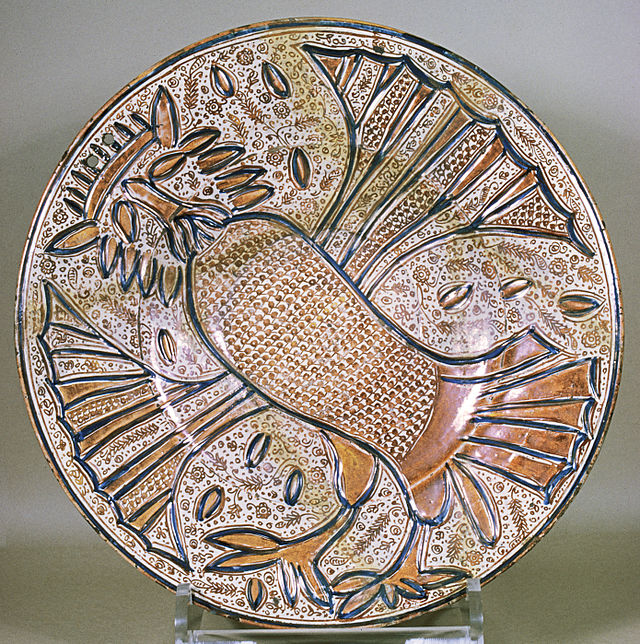
Life Trees | Metepec
Although árboles de la vida —Trees of Life— are produced in different states such as Puebla and Oaxaca, their origin dates to the Mazahua, Otomí, Nahua, Tlahuica a,nd Matlatzinca communities settled in the central region of the country, where the Magical Town of Metepec is located, the cradle of this Mexican craft.
The story goes that the evangelizers took advantage of the pottery tradition of this town and shaped trees of life to help them understand the principles of the new religion that was imposed on them, the Catholic.
Its composition represented in the highest part, an image of God and seven branches that represented the seven days in which he created the Earth, and other biblical passages.
The current representation of the árboles de la vida includes, in addition to the traditional elements, the sun and the moon that frame figures of Adam and Eve surrounded by animals, fruits and flowers that symbolized paradise; historical passages; objects, such as toys or hearts. The potter’s imagination is the limit.



Barro negro | Oaxaca
Barro negro, or black clay is manufactured in San Bartolo Coyotepec, in the state of Oaxaca, using ancient techniques. Its origin dates back to the pre-Hispanic era, as evidenced by the remains of pieces of black clay found in Monte Albán, an important city of the Zapotec culture.
The clay that is used to create this artisan wonder is extracted from places on the town’s outskirts. Then it is molded on lathes, and left to dry in the sun for four days, to polish it —some craftsmen use quartz for polishing— and details such as the characteristic openwork are added. Let it dry in the sun once more for four days and placed in a fire oven.
Until the 50s, these pieces of pottery had a dull gray tone, but it is said that Rosa Real Matero, invented a two-mouth oven that closed in one part of the oven to reduce oxygen inside and avoid reddish tones. which gave it the metallic shine that we know today.
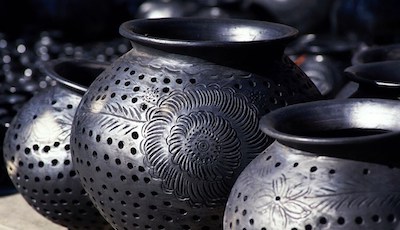
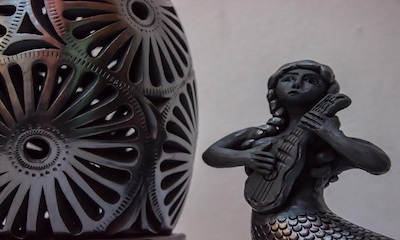
Mata Ortiz | Chihuahua
This stylized pottery work has its origin approximately 600 years ago, among the cultures that inhabited the ancient city of Paquimé.
It was not until just 50 years ago that this artisan tradition was recovered by Juan Quezada Celado, who found pieces of pottery exposed after an excavation of the mounds surrounding the town of Mata Ortiz.
His fascination for the designs that remained intact in the remains found led him to study the technique and, after experiments with different methods, he achieved a perfect imitation. Currently, the quality of this ceramic style and its designs place it among the finest in the world.
Its elaboration consists of baked fine sand clay, of great fragility. The exclusive symbols and designs of the northern cultures are captured with instruments found in nature.
These designs consist of geometric compositions either of pre-Hispanic influence or typical of artisans, with an extraordinary pulse, which mainly draw straight and thin lines, curves, diagonals, circles, triangles and squares, mixed with animals, plants, birds, fish, men and emblems of nature.
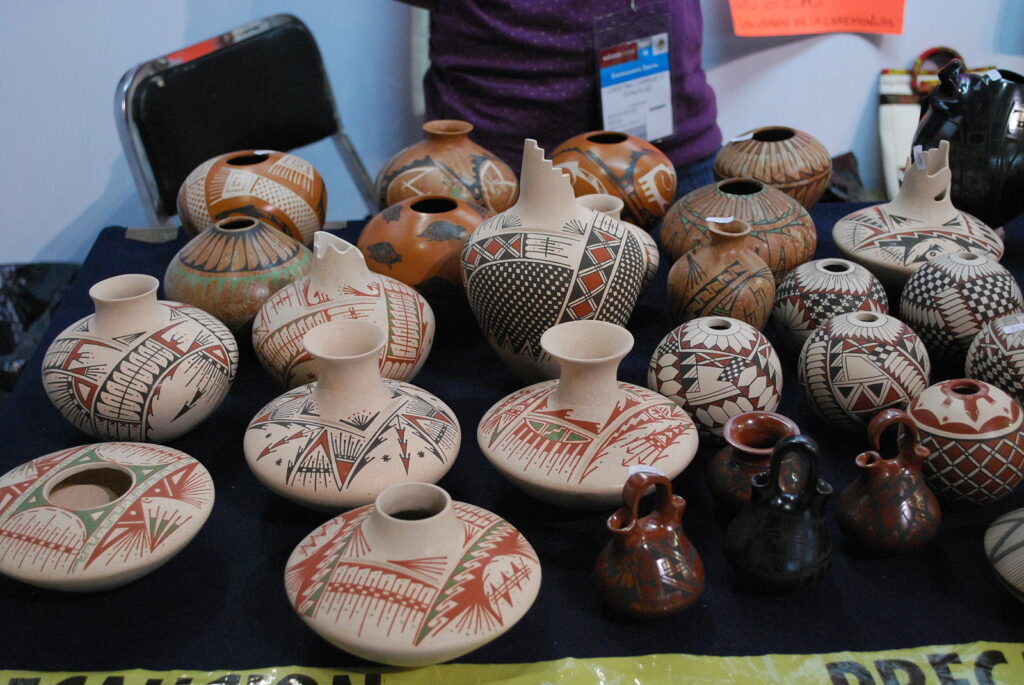
Do you have a piece of Mexican pottery in your collection? Tell us in the comment section.


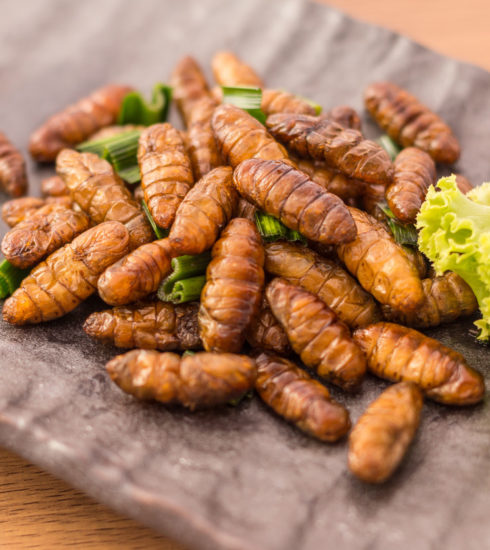

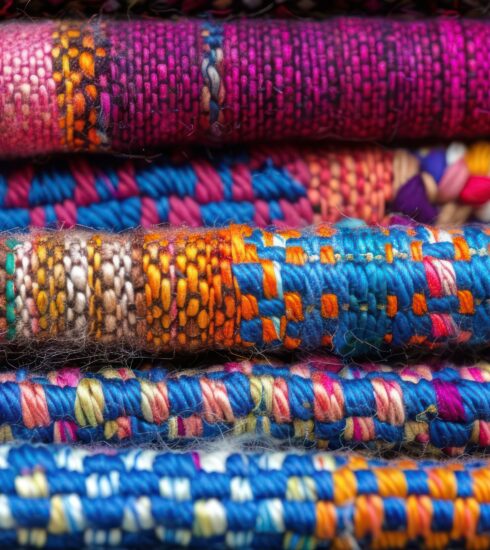
6 Comments
Jacqueline Villasenor
2 years agoI have been collecting Mexican pottery for at least 25 years. It is beautiful and I love to show it off.
Velas Magazine
2 years agoWow, Jacqueline! That’s impressive! We would love to see a picture of your collection one day, it must be awesome! Thanks for sharing this with us.
Tim
2 years agoI have a pot my mother purchased in Mexico in the 70’s I’m trying to find out who the artist is. They did great work. It’s is brown, black and white it has three feet and the handles are octagonal shaped. That may not be the correct word. The pot its self has a spit tune shape with a hand painted picture of a turkey and some flowers. I tried to post a pic but couldn’t figure out how to do it. Does anyone have any idea?
Velas Magazine
1 year agoHello Tim! Thanks for your comment. It’s been a while now since your mom got the pot, so it would be challenging to discover the artist. In Mexico, pottery is made by many artists, the majority of whom are indigenous or native to a region. Actually, you can find many options in galleries or even in the streets if you visit our country. We hope to have you around here someday to get all the pottery you like!
Joyce Encizo
3 months agoI have a 30 inch Rooster. Very colorful, very beautiful. It belonged to my mother in law as long as my husband can remember. On the bottom it says “Merrymao ‘97. Made in Mexico. Rudolpho is just so beautiful, but we can’t find anything about him.
Velas Magazine
3 weeks agoHello, Joyce! Thank you so much for reading us and sharing the story of “Rudolpho” with us. A 30-inch piece sounds absolutely magnificent and full of character! Regarding the mark “Merrymao,” it is likely from a specific family workshop or a local artisan that may not have a digital footprint today. However, that makes him even more special as a unique treasure from the 90’s. It is wonderful that you are keeping this family heirloom safe!